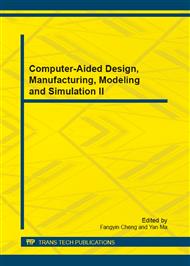p.472
p.476
p.482
p.487
p.492
p.496
p.501
p.505
p.509
Study on the Structural Dynamics of the Elevated Station in Rail Transportation
Abstract:
As the number of the urban population attains a continuous increasing these years, the carrying load of all kinds of transportation lines in society changes into heavier as well. For the purpose of fulfilling the services demands of the rail transportation, the elevated station has turned into a new type of transportation structure, and exercises a critical role in the reduction of the social transportation pressure. The elevated station is a body integrated by both the rail transportation and the elevated bridge, and is much stronger than the traditional structural model in the aspects of the carrying load and structure performance. In accordance with this point, the author emphatically analyzes the structural dynamics of the elevated station in rail transportation in this paper, with the purpose of bringing the using performance of the elevated station into better play.
Info:
Periodical:
Pages:
492-495
Citation:
Online since:
December 2012
Authors:
Keywords:
Price:
Сopyright:
© 2013 Trans Tech Publications Ltd. All Rights Reserved
Share:
Citation:


